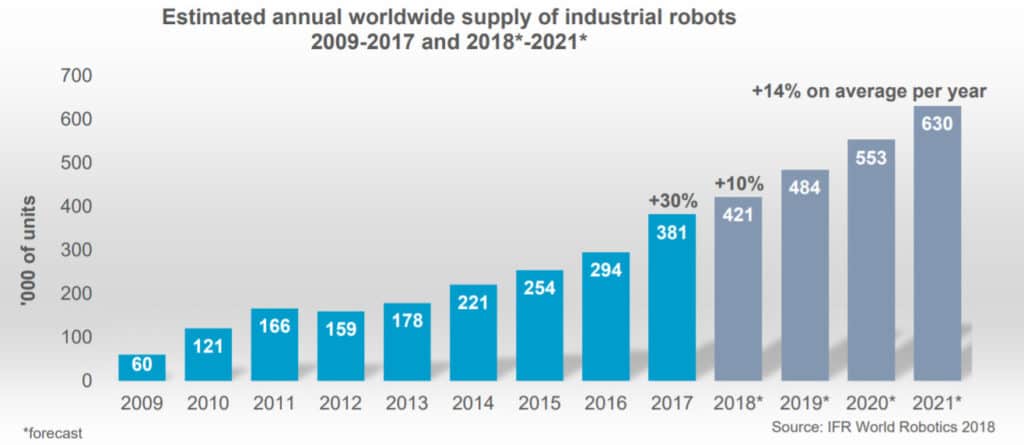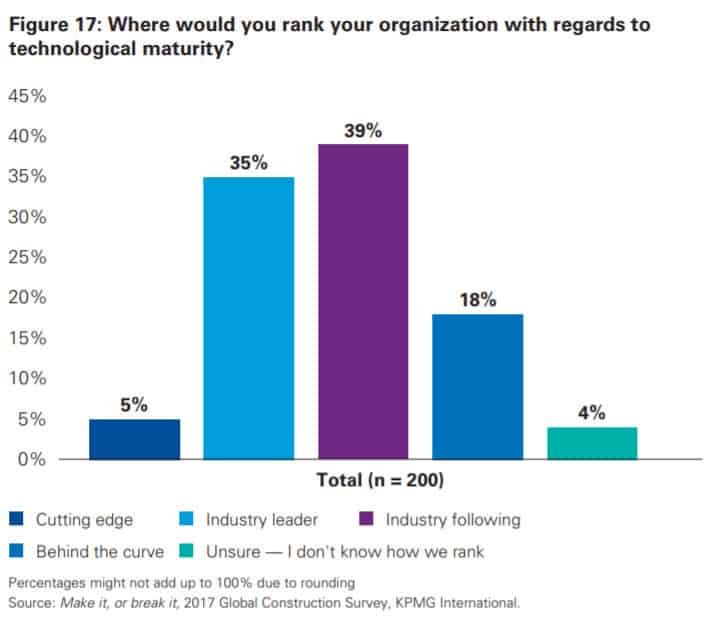
IoT Stats and Facts
Although a revolution in and of itself, the internet has also birthed a large number of other technology revolutions. From smartphones to Wikipedia, the Internet as a medium has resulted in a complete and total transformation of societies worldwide.
Among the most recent developments owing its existence to the internet is the “Internet of Things”, or IoT. This is a new term and concept applied to devices that work together in an interconnected way to gather information, often to better automate processes, and to create a more cohesive and informed user experience.
IoT encompasses a growing number of tech products, including smart home devices like Google Home and the Amazon Alexa-powered Echo, to smart refrigerators that can create grocery lists for you. Most studies and researchers, however, count any internet-connected device as part of the “Internet of Things”.
From a simple view, IoT is about attempting to connect pretty much everything in the world to the internet in some way. From a technical standpoint, however, the “Internet of Things” can be defined, at least by Cisco, as the “the point in time when more ‘things or objects’ were connected to the Internet than people”. According to Cisco, that point was reached around 2008-2009.
A decade of being immersed in IoT means there are big numbers to show for it. And with more devices connected to the web than people (over 4 billion web users as of 2018), the growth of IoT has produced some surprising data and stats to explore.
IoT at a glance
Considering IoT is primarily about the number of devices connected to the internet, these stats demonstrate how large the Internet of Things has grown.
- 7 billion devices were connected to the internet as of 2018, with the number of connected devices expected to approach 10 billion by the end of 2020. (Source: IOT Analytics)
- Gartner predicts a larger amount of “connected things” by 2020. According to Gartner, there will be over 14 billion connected devices by the end of 2019, and over 25 billion by the end of 2021. (Source: Gartner)
- A large majority of IoT is made up of smartphones. According to Newzoo, the total number of smartphone users topped 3 billion in 2018. (Source: Newzoo)
- Most IoT devices are those we’re using at home, or at work. As of 2018, over half of all IoT devices were connected to Wireless Personal Area Networks, such as Bluetooth, Zigbee, and Z-Wave. (Source: IOT Analytics)
- The global IoT market was worth over $150 billion in 2018 and is expected to exceed $1.5 trillion by 2025. (Source: IOT Analytics)

- Smart home devices are and will continue to be a major component of IoT. Device sales were forecast to be over $50 billion in 2018, while over 663 million smart home devices were in homes around the world in 2017. (Source: Strategy Analytics)
- The number of smart home devices purchased is expected to exceed 1.94 billion by 2023, with device sales exceeding $78 billion by that time as well. (Source: Strategy Analytics)
- “Smart cities” are a major and emerging concept in IoT. Over one-fifth of all publicly announced IoT projects involve IoT-driven “smart cities” of some kind, with most of these “smart cities” (45 percent) announced in Europe. (Source: IoT Analytics)
- Over a quarter of all cyber attacks against businesses will be IoT-based by 2025. (Source: Gartner)
- The need for data science specialists is expected to grow far beyond the number of specialists on the market, thanks in no small part to IoT. By 2020, the lack of data science specialists will prevent three-fourths of all businesses from maximizing their IoT goals. (Source: Gartner)
- By 2020, there will be 4 internet connected devices for every human on the planet. (Source: Gartner)
Healthcare IoT stats
The healthcare industry has been a rapid adopter of IoT technology. This comes with many advantages and many risks. But the overall size and complexity of the market is a perfect example of the transformative power of IoT in a single, important industry.
- The healthcare IoT market is expected to be worth 534.3 billion by 2025. (Source: Grand View Research, Inc.)
- North America was the largest market for IoT as of the end of 2017. (Source: Grand View Research, Inc.)
- The EU had around 870,000 active healthcare IoT devices in 2016, and a predicted 2.79 million devices by the end of 2019. ETNO expects there to be over 800 million healthcare IoT connections in Europe by 2025. (Source: ETNO)

- By the end of 2016, 60 percent of healthcare organizations were using IoT devices. (Source: IEEE)
- A majority of healthcare organizations (87 percent) plan to implement IoT tech by the end of 2019. By comparison, 85 percent of non-healthcare businesses plan to do so in that same time period. (Source: IEEE)
- 80 percent of healthcare business executives see increased innovation as the biggest advantage of IoT implementation. 73 percent pointed to cost savings, while 76 percent pointed to “visibility across the organization” as key advantages. (Source: Aruba)
- The most common healthcare IoT devices include patient monitors (64 percent), energy meters (56 percent), and imaging devices (33 percent).
- Over 70 percent of healthcare organizations that use IoT devices utilize them for monitoring and maintenance. (Source: IEEE)
- 50 percent of healthcare IoT is used for remote operation and control, and 47 percent connect their devices to location-based services. (Source: Aruba)

- Security breaches are a significant drawback to IoT. According to IEEE, over 80 percent of healthcare organizations that use IoT devices have suffered a security breach of their IoT devices or infrastructure. (Source: IEEE)
- The most common security threats to IoT were malware (49 percent), human error (39 percent) and DDoS attacks (22 percent). (Source: Aruba)
- The health industry is responsible for 6 percent of global IoT projects, with 55 percent of those occurring in the Americas. (Source: IoT Analytics)
Industrial, energy, and construction IoT stats
The manufacturing and industrial sectors are early and fast adopters of IoT technology, a trend currently known as Industry 4.0. Industrial Internet of Things (IIoT) has a heavy focus not on people using machines, but on machine automation with minimal human input thanks to robotics.
IoT is set to allow robots to operate more intelligently in the industrial sector, with a move toward greater efficiency and cost savings. Human operated machinery is decreasing in the manufacturing and industrial sector, making automated IoT that requires a decreasing level of human input a large focus.
Meanwhile, construction is experiencing a bit of a slow adoption with new technologies such as IoT. Although technically part of the industrial sector, construction maintains a set of technology needs that set it apart, even as it shares a lot of the same technical challenges as the wider industrial sector.
There’s a lot of attention on how IoT can be used to improve worker safety in construction, which many workers and industry observers openly welcome. Given the construction industry is among the most dangerous for workers, IoT can help set to make it far safer than ever before, so long as businesses in construction are willing to spend the money to make it happen.
- In Germany, 91 percent of industrial/manufacturing businesses invest in “digital factories” that include IoT solutions. (Source: PwC)
- Companies expect IoT and other digital technologies to improve efficiency by 12 percent. (Source: PwC)
- The International Federation of Robotics expects the supply of industrial robots (many of which are now internet-connected in some way) to increase around 14 percent per year. By 2021, the IFR predicts 630,000 units worldwide. (Source: IFR)

- Asia and Australia collectively are the biggest users of industrial robots. That region currently uses over 60 percent of all worldwide industrial robot units, versus just around 20 percent in Europe, and around 13 percent in the Americas. That margin is expected to grow larger as Asian countries more rapidly grow their automated manufacturing capacity. (Source: IFR)
- More specifically, China is the largest user of industrial robots (over 137,000 units), with Japan in a distant second (over 45,000 units). (Source: IFR)
- A survey of data analytics professionals in the industrial industry found that most believe the importance of spreadsheets will decline as IoT-enabled devices and other automated business intelligence tools take over. (Source: IoT Analytics)
- Industrial data analytics may cause a few headaches along the way. Only 32 percent of data analytics professionals in the industrial industry state they are “good” or “excellent” at interpreting sensor data correctly. (Source: IoT Analytics)
- Manufacturing IoT grew 84 percent between 2016 and 2017, the highest of any industry. (Source: Verizon)

- Commercial drones are a major tool in industrial IoT. Over 40 percent of commercial drones are used for industrial inspection. (Source: Verizon)
- The manufacturing industry poured $183 billion into IoT in 2017. (Source: Verizon)
- IoT Analytics predicts the industrial industry spent over $64 billion on IoT in 2018 and expects Industry 4.0 spending to increase to $310 billion by 2023. (Source: IoT Analytics)
- Notably, there are 6 supporting technologies to pay attention to in Industrial IoT: Additive manufacturing (3D printing), augmented and virtual reality, collaborative robots, connected machine vision, drones / UAVs, and self-driving vehicles). (Source: IoT Analytics)
- Ninety-five percent of construction business operators believe emerging technologies (including IoT) will fundamentally change their industry. A further 74 percent believe a technology disruption will change their industry within the next 5 years. (Source: KPMG)
- Most construction CIOs see a technological disruption of the industry as more of a positive than a negative. (Source: KPMG)
- Seventy-two percent of construction business operators new tech adoption is a part of their strategic plan or vision. This ultimately includes various IoT implementations. Nearly half (48 percent) have already developed a technology/data road map or business strategy. (Source: KPMG)
- However, only 5 percent see themselves as on the “cutting edge” of construction technology implementation. Most (over 57 percent) see themselves as followers or even behind the curve. (Source: KPMG)

- Around 12 percent of construction businesses have “just started” using robotics process automation or digital labor, while 4 percent have already implemented them, or are in the process of implementing them across all projects. (Source: KPMG)
- Construction IoT has the potential to vastly reduce various accidents, including backover accidents, by using RFID technology to deliver proximity warnings. (Source: Kanan, Elhassan, & Bensalem, 2017)
- Other areas where IoT is making headway into construction include wearables to monitor worker heart-rate and temperature, concrete curing, sensors to monitor fuel consumption and vehicle wear and tear, RFID for inventory management, and GPS for equipment and personnel location tracking. (Source: Tech Bullion)
- Industrial IoT makes up 17 percent of all global IoT projects. (Source: IoT Analytics)

















